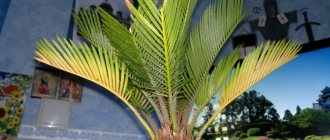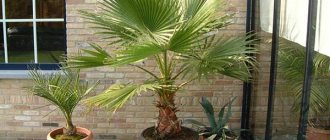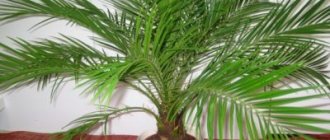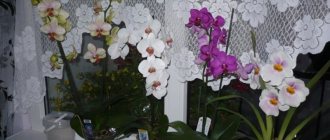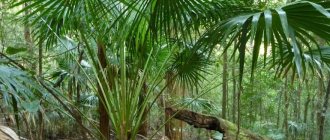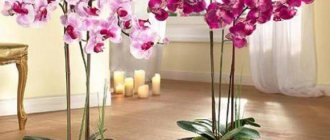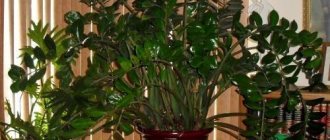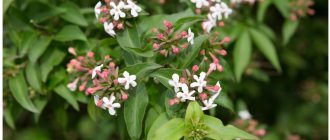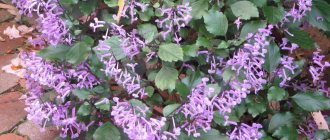Palms are an ancient family of plants. Its different species have taken root in the tropics, subtropics and equatorial forests. These are coconut, oilseed, peach, ginger, date and other palm trees. Among the fruits that grow on them are coconuts, dates, drupes, and saw palmetto. In total, there are more than 3,000 individual varieties in the family. You can find a detailed description of each. Palm trees are the most recognizable plants in the world, despite the fact that their habitat can be limited not only to warm regions, but also to several islands. They are well adapted to the wild and outperform many plants. One of the amazing properties of palm trees is their endurance in unusual conditions. Some subspecies easily withstand severe frosts and other unfavorable factors. Palm trees can grow indoors in different climates and do not require careful care. You can grow them without gardening experience.
Overview of species
Each type of indoor palm tree has its own specifics. Therefore, any consumer will be able to choose the ideal plant according to their needs.
Brachea
In some sources, this plant is also called bragaea, but this spelling is becoming increasingly rare in our country. Although it should be recognized as correct, since the species was named in honor of the famous astronomer Tycho Brahe. The height of trees can reach 12 and even 15 m. The trunk of this variety of ornamental plants is bare from below.
The foliage looks like rounded fans, with deep dissection into segments.
The inflorescences of this culture resemble a complex panicle. Their length reaches 5 m. There are both smooth and spine-covered petioles. Yellow-green flowers are collected in groups of 3 pieces. Brachea fruits are shaped like an egg or a ball.
They always have a fleshy shell. In nature, this plant inhabits Guadeloupe, mountainous dry areas of Mexico and other Central American countries.
Bhutia
This species is also named after one person, but already a Scottish nobleman. Butia capitata is a prominent representative of the palm family; this genus includes approximately 20 biological species. Its natural habitat is various countries of South America.
The leaves always have a pinnate structure, which is how they are distinguished. The height of the palm tree can reach 6 m with a trunk circumference of up to 50 cm.
Kariota
This genus of palms with thin leaves with a ragged edge is very attractive in everyday life. In total, the group includes 12 species. Unlike previous genera, it comes from Southeast Asia and the shores of the Indian Ocean.
Please note: some types of palm trees are traditionally used to produce wine and sugar.
In our country you can expect to grow indoor and soft varieties of caryota. Under natural conditions, they can rise up to 10 m. Growth occurs quite quickly, but if necessary, it can always be easily slowed down by ordinary agronomic manipulations.
There are also shrub varieties of the crop. All its leaves are of the double-pinnate type.
Washingtonia
When describing palm-shaped plants, one cannot ignore the culture that owes its name to the American capital. In nature, this genus grows up to 30 m. But only specimens no larger than 2 m can be grown at home.
Important: this whimsical plant is much more capricious than other indoor palm trees. If handled improperly, it may even die altogether.
Washingtonias grow with wide, fan-like leaves. In a home culture, this crop will not bloom or bear fruit. Since it is brought from warm regions, it will require long, scrupulous acclimatization.
Important: the plant can withstand frosts down to –12 degrees, but only for a short time. Botanists distinguish 2 types of Washingtonia - filamentous or filamentous and strong (robusta).
Giophorba
It also has an alternative name - bottle palm. This name is given for the special geometry of the trunk. The culture is not suitable for apartments and offices. However, experienced plant growers may perceive hyophorba not as an obstacle, but as a challenge.
It is worth considering that such plants are very rare - they may be included in the list of extinct species in the coming years.
Giophorba grows slowly. If 1 leaf appears every year, this is already a good success. It is impossible to grow specimens larger than 2 m in a pot. The plant has a very heat-loving disposition. Already at zero degrees it suffers extremely.
Gouveia
These plants (sometimes also called howea) are in great demand among gardeners. Growing them indoors began in Victorian England. For your information: you can only find gouvea in nature on the Australian Lord Howe Island.
Both species included in this genus grow up to 3-5 m in indoor conditions. In this case, they most often stop at a lower figure.
Important features of culture can be considered:
- a large number of upper stems;
- extremely slow growth (up to 3 leaf blades per year);
- ease of cultivation;
- the ability to achieve a beautiful look only with careful care.
Liviston
Once again, there is a palm tree named after a Scottish nobleman, but without a formal title. It is a tree up to 25 m high. The diameter of the leaves is 0.6-1 m. They are characterized by a dark green, less often gray-green color.
The rest period for Livistona is not very typical; instead of a trunk, it forms a mass of leaf plates.
Rapis
This type of plant is very suitable for small apartments and medium-sized private houses. Moreover, it will look impressive in appearance.
For indoor culture, low rapis is more often used; tall rapis is less suitable for home growing, but it is useful in the office, where you can put a tree 3 m high.
Rapis is extremely light-loving. This plant requires normal room temperature.
Ropalostylis
This palm comes from New Zealand. It is characterized by a slender trunk, on which rings from fallen leaves remain. When flowering ends, small round fruits appear. They are painted red.
Only young ropalostylis are grown in rooms, since the height of adult specimens reaches 10-12 m.
Sabal
The sabal genus includes 16 species. The height of the trunk in nature can be up to 25-30 m. Moreover, its diameter will be up to 60 cm. The evergreen leaves are shaped like a fan.
The rachis rod gives the foliage increased strength.
The plant inhabits:
- Colombia;
- Mexico;
- Venezuela;
- other Central American countries;
- Bermuda;
- southern and southeastern United States.
Trachycarpus
The height of the trunk reaches 12 m. Its diameter ranges from 15 to 20 cm. There are now 9 species in the genus Trachycarpus. The length of the branched inflorescence is up to 1 m.
In home culture, Trachycarpus Fortune predominates, the height of which does not exceed 2.5 m.
Other information:
- optimal growth in partial shade;
- mandatory high air humidity;
- some slowdown in growth in the winter months.
Date
This plant is colloquially called date. The culture was known in the territory of modern Iraq 6 thousand years ago. Date palms can be either trees or tall shrubs.
Varieties with several trunks predominate among them. Dates are often grown at home from seeds.
Hamedorea
The genus Hamedorea includes at least 100 different species. The main range is the south and center of the American continent. All varieties of chamedoreas are low-growing shrubby plants with a rhizomatous structure.
Outside the natural zone of settlement, the “graceful” species and Ernest-August chamedorea are grown. Both varieties tolerate deep shade well.
Hamerops
This genus of indoor palms is represented by only one species. And this is the only plant of this family that can be found in Europe. The trunk reaches 4-6 m in height. Flowering occurs in April, May and June. The plant develops spiny petioles.
The list of possible types of indoor palm trees does not end there.
The betel nut variety is sometimes called the areca palm; the name may be shortened to simply “areca”. But such a reduction is not entirely botanically correct. The height of betel trees can be 30 m. The trunk is always straight, without noticeable branches.
Hawaiian culture, or brigamia, can also be called a volcano palm due to its shape. It is curious that some time ago this species was on the verge of extinction. The situation was saved by the efforts of ecologists and climbers, who had to pollinate the plants by hand. An equally interesting feature for gardeners is that it is a succulent.
Hawaiian palm trees are characterized by a fleshy stem that is brownish-green or silvery-ashy in color.
The genus Pandanus, or screw palm in other words, includes at least 750 plant species. They are most often found in tropical regions of the Eastern Hemisphere. There is pandanus in Madagascar, and at least 90 species grow there. They are able to adapt even to very complex and varied environmental conditions: on river banks, in high mountain forests, on the slopes of volcanoes and in swampy areas.
All year round you will have to maintain the temperature not lower than +19 and not higher than +25°C.
The water palm, or rather the water palm, is a crop with phenomenal resistance to negative conditions. It's more of an aquarium plant that clings to the bottom. It has nothing to do with real representatives of the palm family. But it overwinters excellently even during a very harsh winter.
Purchasing and planting of Aloe vera (this is the botanical name) is possible throughout the warm season.
Interesting Facts
Translated from Latin, the word “palm” means “palm”. And this is not without reason, because the leaves of the plant really look like a large, wide-open human palm.
The natural habitat of these tall trees is Africa and some regions of Eurasia and Central Asia. The climate should be warm and tropical. In total, there are about 3,500 varieties of wild palm trees in the world. Despite this, only a small proportion of them have adapted to indoor growing conditions. Plants are divided into different types according to external characteristics. Thus, fan, pinnate, single-trunk and shrub palms are distinguished.
It is also interesting that the first attempts to cultivate indoor palm trees were made in Ancient Rome. Back then, this was a sign of belonging to the upper class, since few could afford such luxury.
Sources
- https://selo.guru/rastenievodstvo/palmy/vidy-p
- https://kvetok.ru/rastenie/palmy
- https://s30668802513.mirtesen.ru/blog/43444106293/Komnatnyie-palmyi:-foto-i-nazvanie
- https://dizajngid.ru/vse-o-komnatnyih-palmah-nazvanie-vidov-s-opisaniem-foto-i-video-sovetyi-po-uhodu/
- https://WhatFlower.ru/houseplants/raznovidnosti-komnatnoj-palmy-kakuyu-vybrat-domashnyuyu-palmu-dlya-dekora-pomeshheniya/
- https://TheFlowers.su/komnatnye-tsvety/komnatnye-palmy-katalog-s-fotografiyami-i-nazvaniyami.html
- https://roomester.ru/landshaft/komnatnye-rasteniya/palma.html
- https://www.InMyRoom.ru/posts/13069-14-raznovidnostej-komnatnoj-palmy-o-kotoryh-vy-ne-znali
- https://design-bathroom.ru/komnatnaja-palma-vidy/
- https://profogorod.ru/cvetovodstvo/komnatnye/raznovidnosti-domashnej-palmy.html
- https://palma-doma.ru/palma-domashnyaya-uhod-i-vidy/
- https://sadovnikam.ru/443446a-komnatnaya-palma-vidyi-nazvaniya-pravila-uhoda-i-foto
[collapse]
What are the benefits of domestic palm trees?
Once in an apartment, a home palm tree can become the main decoration. What made this houseplant so popular?
The palm is an elegant solitary plant. To decorate your interior with it, you don’t need to start a whole nursery. One such tree will fill the void in the corner and become a complete decoration in any room, on the balcony, in the corridor.
- The plant is not demanding on growing conditions. You don't need to understand the intricacies of botany to grow a beautiful indoor palm tree.
- A big plant means more oxygen.
There are many varieties of this plant, from which you can choose the one that best suits your specific growing conditions. These are palms for warm rooms, moderately warm and cool.
If the area allows, you can choose a larger and taller plant. If not, there are types that are smaller in size.
The domestic palm tree is suitable for growing and propagation in any climate zone. Even in winter, it does not need to create special conditions, just protect it from dry air.
It is shade-tolerant, so it is not necessary to place the flower pot only near the window.
Coconut colored pencils
This tutorial shows you how to make a realistic image of a coconut. Its outer shell consists of fibers (coir). This texture can be depicted using shading.
The drawing process consists of performing the following step-by-step actions:
- Draw an oval outline of the coconut with a black or simple graphite pencil. Make a small point at the end of the nut.
- To the left, draw an arc on the basis of which half of the cut nut will be built.
- Duplicate this line inside the outline.
- Add the left edge of the cut nut.
- Draw another outline showing the thickness of the peel.
- Paint over the coconut shell with a dark brown pencil, leaving it lighter on the left. Sketch the outline of the nut kernel.
- Shade the core, applying a darker color along its edges.
- Paint over the outer surface of the nuts with a brown pencil. The background surface should be darker. Hatching can be applied in segments of uneven brightness, this will give the coconut a fibrous structure.
- Using an orange pencil, apply a second layer of shading on both coconuts. The skin of the cut nut should be darker.
- On the whole nut, make another layer of shading in bright orange.
- Apply a layer of shading on top of it with a brown pencil.
- The outside of the outline is also shaded with orange and brown, giving a realistic look to the uneven, “hairy” surface of the coconut.
- Add rougher strokes with a dark brown pencil below and above.
- “Even out” the color of the nut with an orange pencil.
- Shade the falling shadows below with a simple or black pencil.
- On the whole coconut, apply a dark brown shadow at the bottom.
- On top, at the point of the coconut, also add touches of dark brown.
The palm tree in the drawings can also be depicted growing on a small lonely island in the middle of the ocean, as an oasis in the desert, or with a chest full of treasures. For young children, shading a large area of paper with a pencil can present certain difficulties. Therefore, graphics can be combined with watercolors, and the sea and sky can be painted over with watercolors.
Growing and caring for domestic palm trees
Tropical beauties are unpretentious to keep, but there are some nuances that should be remembered and taken into account when growing them. First of all, the time of their acquisition, which should be in the spring or summer, when it is easier for them to get used to the conditions of their new home.
One of the problems of flower growers is transplantation.
A certain difficulty is that for large specimens it is more difficult to buy components for the substrate. The soil mixture that is sold in most flower shops is designed for young plants no more than 2 years old or only grown from seedlings.
For mature palm trees, the soil needs to be made heavier by adding turf soil and humus from leaves, which are not available for sale.
For young palm trees, a substrate is made up of the following components, taken in equal volumes:
- high peat;
- turf land;
- leaf humus;
- sand.
For large-scale soils, the basis is 3 volumes of soddy-clay soil mixed in equal parts with leaf humus, and 1 volume each of coarse river sand and high-moor peat.
The optimal period for transplanting domestic palm trees is from the second ten days of April until mid-summer.
Plants transplanted according to the basic rules are not fed at all in the first year, but this does not apply to those palm trees that are transferred to a new flower vessel by transfer. They, like other indoor palm plants, are fertilized with a special mineral complex during active development.
Water your palm tree sparingly throughout the year. She doesn’t like the substrate to dry out or overwater, and she responds very gratefully to spraying.
Attention! The drain hole should be inspected regularly. Very often, overgrown roots clog it, and water stagnates in the pot, which can lead to deterioration of the plant’s condition and the appearance of diseases.
Propagation by seeds
Help : with the seed propagation method, the varietal characteristics of the parent plants are lost, so it is suitable only for species plants.
Seeds are sown in early March in turf soil mixed with sand. They sprout unevenly and germinate for quite a long time, within 1-3 months, but the grown trees are fully adapted to home conditions.
Now you have the necessary information about this chic and unpretentious plant that can decorate your home or office and create a peaceful atmosphere in it. All that remains is to choose the type of cordyline that is most attractive to you.
Palm-like plants
The group of palm-like plants includes species that only vaguely resemble in appearance representatives of the Arecaceae family. Often these are herbaceous plants or succulents; there is a shrub with fruits that taste identical to dates, but they are classified as palm trees only by popular imagination.
Brighamy
Hawaiian palm Brighamia is a perennial succulent from the Campanaceae family, endemic to the Hawaiian archipelago. A short-lived plant that is on the verge of extinction - only a few specimens remain in nature under protection in Na Pali Coast National Park, located on the island of Kauai.
The plant has a thick, unbranched stem, reaching a height of 1–2 m, less often 5 m. At its crown there is a rosette of fleshy, spoon-shaped leaves. It blooms in autumn with fragrant funnel-shaped flowers of lemon or cream color, forming an inflorescence of 3-8 pieces.
Karlyudovik
Panama palm Carludovica (Carludovica) is a low palm-shaped plant from the Cyclantaceae family - only 4 species in the genus, common in the tropical latitudes of America. Named after the Spanish monarch Charles IV. Leaves on long petioles are beautifully fan-shaped, three or five dissected. The flowers resemble balls on a cylindrical cob, the fruits are tetrahedral berries.
Banana Palm Banana
Banana palm Banana (Musa) is a herbaceous plant of the Banana family, in nature it grows up to 7 m. It is widespread in Southeast Asia, but mostly on the islands of the Malay Archipelago. The genus includes up to 70 species of large herbs, which are often mistaken for trees, with a powerful root system and a very short trunk that practically does not protrude above the soil surface.
What many people mistake for a trunk are actually tightly fitting leaf sheaths - large, oval, soft.
When the plant is about to bloom, a long peduncle is formed inside this false stem, raising upward a brush with male and female flowers of purple or greenish color.
Castor palm
The castor palm (Ricinus) is the only herbaceous plant in the genus, the castor plant, which belongs to the Euphorbiaceae family. In temperate latitudes it is considered a medicinal, oilseed and gardening annual crop; in tropical regions it grows as an evergreen shrub. Supposedly originates from Ethiopia, but has spread throughout the world.
In some countries it has been grown for more than 4 thousand years.
The stems are hollow, growing vertically, and have different shades - purple, reddish-burgundy, pink or almost black. The leaves are huge, sometimes reaching 80 cm in diameter, with a beautiful maple-like shape on long petioles. The flowers in the axillary inflorescences are small and inconspicuous, but the spiny fruit capsules with oval seeds inside look quite exotic.
Snake Palm Amorphophallus
Snake palm Amorphophallus is a tuberous plant from the Araceae family. The genus consists of 170 species found in West Africa and the Pacific Islands. One of the species has the largest inflorescence in the plant world, 2.5 m high, with the most unpleasant smell of rotten fish and spoiled eggs.
It grows from an underground turnip-shaped tuber, throwing out only one tripartite leaf, very rarely - 2-3.
The inflorescence is an elongated spadix, wrapped in a blanket, white-green on the outside, crimson or purple on the inside.
Real jujube
Unabi Chinese date, or real jujube (Ziziphus jujuba) - the species belongs to the genus Jujube of the Buckthorn family. A small tree or shrub with thick bark and simple oval leaves. It blooms with inconspicuous miniature light green-white flowers.
The fruits are very tasty and juicy drupes with sweet reddish-brown pulp, reminiscent of dates in taste.
Sago Palm Cycas
Cycas sago palm (Cycas) is a cycad from the genus of the same name, which is the only one in the Cycas family, consisting of 90 species. It lives in Asia, Indonesia, the Pacific Islands, as well as Australia and Madagascar. It is very similar to a palm tree, grows up to 15 m in height, the trunk is thick in circumference even with a relatively short stature.
The feathery leaves are concentrated at the crown of the trunk in the form of a tuft.
Beaucarney
Bottle palm Nolina, or Beacarnea, is a tropical plant from the Asparagus family, native to southern Mexico. The barrel of the nolina is shaped like a bottle. The thickening in its lower part serves to accumulate moisture and nutrients. At the top a tuft of narrow linear leaves is formed.
Due to its exotic appearance, it is popular in decorative floriculture and is popularly called “horse tail” or “elephant foot”.
Madagascar palm
Madagascar palm Pachypodium lamerei is a species from the Pachypodium genus of the Kutrovaceae family. The plant has a tall, thick silver-gray trunk with characteristic thorns, which occasionally branches. The leaves are narrow, with a distinct central vein, forming a rosette at the top.
In the natural environment it grows up to 6 m, but in indoor conditions it grows slowly and does not reach more than 1.8 m.
It blooms reluctantly indoors, but in the garden it produces spectacular large snow-white flowers with a pleasant aroma.
Euphorbia white-veined
Euphorbia palm, or White-veined Euphorbia (Euphorbia leuconeura) is a plant with a thickened 4- or 5-rib trunk and a beautiful rosette of elongated oval leaves from 10 to 20 cm long with light veins. The flowers are small, thread-like and very rich in nectar.
The three-nest fruit capsule has the unpleasant property of shooting seeds all over the room. Once in neighboring pots, they germinate beautifully.
Cat palm Cyperus
Cat palm Cyperus is a swamp tropical representative of the sedge family with straight herbaceous stems topped with an umbrella-tuft of hard linear leaves.
There are about 700 species in the genus Syt, but several are popular indoors, especially loved by domestic cats, which is why they received such a popular name.
Tropical beauties
Indoor palms come from the tropics. There are about 3 thousand species in the world, but only a few take root in apartment conditions.
According to the structure of palm trees there are:
- fan;
- reed;
- feathery;
- sago;
- "fish tail".
These indoor trees need special conditions where there is enough moisture, heat, and light. They require constant spraying: three times a week in summer, daily in winter. The dry air in apartments is harmful to them. Timely watering of plants is important, but not excessive, good drainage is required.
The decorative palm tree does not tolerate direct sunlight, loves diffused lighting, does not tolerate cold window sills, and is easily destroyed there. Tropical plants do not like drafts or hypothermia. They need to create a stable microclimate and maintain it constantly.
At home, in a tub, the date palm reaches a height of two meters. An adult specimen blooms with small yellow flowers. One cannot expect the fruits that many people love to appear from it. They grow only in natural conditions, where the height of the tree reaches three tens of meters.
False palms
False palms include a form of plant that is characterized by a bare vertical stem and a rosette of narrow strap-shaped or narrow-linear leaves at the crown. Outwardly, there is a great similarity with a palm tree, but these plants do not belong to the Arecaceae or Palmaceae family, but are representatives of other families - Pandanaceae, Agaveaceae, Asparagus.
Yucca
Yucca is a garden or indoor plant from the Agave family. The flower, grown in open ground, has a rosette of hard, belt-shaped leaves, from the center of which, in early summer, a tall peduncle with many drooping bell-shaped flowers of white or pink color is formed. Indoor yuccas for the most part have a woody trunk, occasionally branched, on the top of which narrow linear-lanceolate leaves are collected.
The flowers are large, bell-shaped, snow-white, forming a numerous panicle. There are 20 species in the genus, distributed in the southern United States and Central American countries.
Dracaena
Dracaena is a genus of woody or shrubby succulents from the Asparagus family, which according to various sources includes from 40 to 150 species, living mainly in Africa. Only a few species grow in the southern regions of Asia and only one in the tropical zone of Central America.
Like palm trees, dracaena has a single or branched trunk, to which narrow leaves with longitudinal veins are attached evenly along the entire length, converging to a pointed apex.
At home it blooms extremely rarely. The small whitish-light green flowers of all species, with the exception of one, have an unpleasant smell.
Screw Palm Pandanus
Screw palm Pandanus (Pandanus) - almost 750 species of tree-like plants of the Pandanaceae family, living mainly in the tropical latitudes of the Eastern Hemisphere, are considered to be pandans. In Madagascar alone there are approximately 90 species.
Their trunks are branched and long, sometimes growing more than 10-15 m, reaching a maximum of 25 m.
Adventitious roots are formed along the woody pagons, which save the plant during a strong hurricane wind. The leaf blades can grow to a length of 4 m with a width of only 11–15 cm, and are arranged spirally on the trunk in 2–4 tiers. Inflorescences - cobs or panicles.
Cordilina
Cordyline is a small genus of 26 species in the Asparagus family. Its representatives live in the subtropics and tropics of the American, Asian and Australian continents. Among them there are trees and shrubs with fleshy tuberous roots. The foliage is colorful, with cream or soft pink stripes.
The leaf blades are elongated-lanceolate, belt-shaped. Small flowers of scarlet, snow-white, lilac colors are collected in a panicle.
Adult specimens resemble dracaena, the differences being that the root section of the latter is orange-coral, while the cordyline is ordinary white. They are also distinguished by leaf veins - parallel in dracaenas, in cordyline they clearly branch from one central one in the middle of the leaf.
Watering
Brachea Arma has a low water requirement. Throughout the year, it should be watered very moderately, trying to maintain soil moisture at the same level.
Always let the top layer of the substrate dry slightly before watering again. With constant excessive moisture, the leaves of Brahea Armata become covered with brown spots. Water for irrigation should not be hard; rain water is ideal.
This palm tree
A gravel drainage layer and a well-permeable substrate are absolutely necessary. Without these conditions, it can be destroyed by a long period of rain.
Moderate watering of potted plants
- Before watering, allow the substrate to dry to about 2/3 depth, then lightly moisten it.
- Pour some water onto the surface of the earthen ball and wait until it is absorbed.
- The water should penetrate to the bottom of the pot because that is where the palm tree has most of its roots. With moderate watering, it is enough for water to flow out slightly from the hole at the bottom. Be patient and moisten the soil gradually. Remove excess water from the saucer.
Trying to determine soil moisture with your finger doesn't work here. With enough experience, you can estimate the humidity when growing seedlings. However, for larger plants you will need a moisture meter (available here) otherwise you will misjudge the condition of the soil, causing it to dry out or become overwatered.
Note: Palm trees tolerate too little moisture better than too much. The entire earthen ball should be evenly moistened, and not just the top layer. Do not pour or fertilize palm trees at the growing point. The water temperature should match the soil temperature.
Making your own substrate : Mixing your own substrate is not difficult. The reward for your work will be a healthy, strong plant that is resistant to diseases and pests - of course, provided that all other requirements for lighting, water, temperature and nutrition are met. A properly prepared substrate does not compact over time, so it will be possible to do without annual replanting.
A layer of shards or pebbles should be placed at the bottom of the pot for better drainage and ventilation.
Substrate mixture for Brachea Armed:
- 70% coconut substrate, or coarse homemade peat, or commercial peat-based soil;
- 5% lime clay or loamy garden soil;
- 10% quartz sand with fractions from 1 to 4 mm;
- 15% mineral drainage;
- Lavalite up to 12mm, pumice, perlite, expanded clay, vermiculite, rockwool and organic drainage (eg composted pine bark, rice hulls, peanut shells, redwood).
Substrate ingredients can be ordered here
Soil pH between 5.5 and 6.5 can be adjusted by adding more or less peat. It is important to maintain the correct mixture ratio and uniformity. Using a pH meter or indicator strips, you can determine the pH value of the finished mixture and, if necessary, correct it. Slow release organic fertilizers such as bone meal, horn shavings, etc. should be added directly to the substrate.
Buying tip: Order a pH meter, soil pH tester and test strips.
Palm trees are often offered for sale in regular peat or potting soil mixed with foam balls. Such soil should be changed to a more suitable one during the first replanting.
